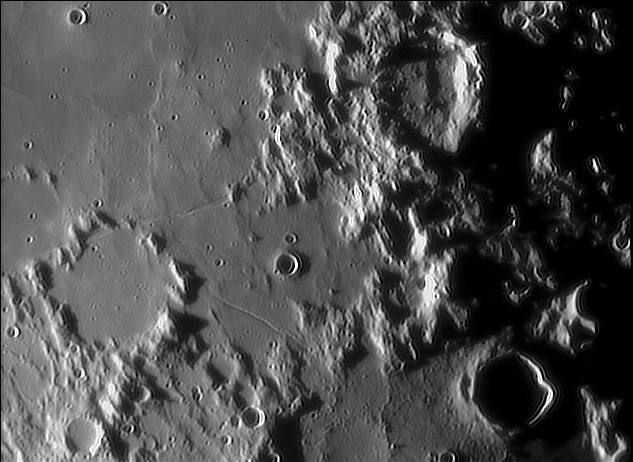
image by Gerardo Sbarufatti
This is a fascinating area with layers of history. For orientation the crater at bottom right is 30 km wide Horrocks, with Rhaeticus at top right and the fragmented walled Réaumur at lower left. But the story here is the multiple layers of surface material. In the middle of the frame a relatively smooth material appears to be draped over low ridges and small hills. The right side is an older and more rugged piece of terrain. Bottom right is the floor of Hipparchus, with more impact craters than the two smooth surfaces. What are all these units? The rugged stuff is part of the ancient highlands, cut by old craters such as Hipparchus, whose floor was covered by a smoothing material – old lava or basin ejecta? The intermediate smoothed stuff in the middle is widely interpreted as fluidized ejecta from Imbrium or other basins. This unit is cut by rilles - the narrow Réaumur Rille and the broader Oppolzer Rille. And notice the very delicate V-shaped rilles linking the other two. The youngest material is the Sinus Medii lava flows at top left, and small impact craters have formed over every unit.
Technical Details:
25 September 2005, 02:21 UT. 8″ SCT Celestron + 2X Barlow + Phillips Vesta Pro camera + 5,500 red filter; 2,000 stacked images.
Related Links:
Rükl chart 44
COMMENTS?
Click on this icon File:PostIcon.jpg at the upper right to post a comment.



